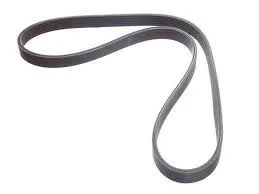- Arabic
- French
- Russian
- Spanish
- Portuguese
- Turkish
- Armenian
- English
- Albanian
- Amharic
- Azerbaijani
- Basque
- Belarusian
- Bengali
- Bosnian
- Bulgarian
- Catalan
- Cebuano
- Corsican
- Croatian
- Czech
- Danish
- Dutch
- Afrikaans
- Esperanto
- Estonian
- Finnish
- Frisian
- Galician
- Georgian
- German
- Greek
- Gujarati
- Haitian Creole
- hausa
- hawaiian
- Hebrew
- Hindi
- Miao
- Hungarian
- Icelandic
- igbo
- Indonesian
- irish
- Italian
- Japanese
- Javanese
- Kannada
- kazakh
- Khmer
- Rwandese
- Korean
- Kurdish
- Kyrgyz
- Lao
- Latin
- Latvian
- Lithuanian
- Luxembourgish
- Macedonian
- Malgashi
- Malay
- Malayalam
- Maltese
- Maori
- Marathi
- Mongolian
- Myanmar
- Nepali
- Norwegian
- Norwegian
- Occitan
- Pashto
- Persian
- Polish
- Punjabi
- Romanian
- Samoan
- Scottish Gaelic
- Serbian
- Sesotho
- Shona
- Sindhi
- Sinhala
- Slovak
- Slovenian
- Somali
- Sundanese
- Swahili
- Swedish
- Tagalog
- Tajik
- Tamil
- Tatar
- Telugu
- Thai
- Turkmen
- Ukrainian
- Urdu
- Uighur
- Uzbek
- Vietnamese
- Welsh
- Bantu
- Yiddish
- Yoruba
- Zulu
Gor . 25, 2024 05:23 Back to list
Understanding the Importance of the Serpentine Belt in Your Vehicle's Performance and Maintenance
Understanding the Car Serpentine Belt Function and Maintenance
The serpentine belt, an essential component in modern vehicles, plays a crucial role in a car's operation. Its name derives from its long, winding path through various pulleys, much like a snake. This single belt drives multiple peripheral devices in the engine, including the alternator, power steering pump, water pump, air conditioning compressor, and sometimes the vacuum pump. Understanding the function, importance, and maintenance of a serpentine belt can help car owners ensure their vehicles run smoothly and efficiently.
Function of the Serpentine Belt
The serpentine belt connects the engine’s crankshaft pulley to multiple accessory pulleys, allowing the engine to power various systems. When the engine runs, the crankshaft turns, which in turn spins the serpentine belt. The rotational motion transfers power from the engine to the accessories. For instance, it drives the alternator to generate electricity, powers the water pump for engine cooling, and assists the power steering for ease of maneuvering. Without a functioning serpentine belt, a vehicle can experience a host of issues, from electrical failures to overheating.
Importance of the Serpentine Belt
The importance of the serpentine belt cannot be overstated. A well-maintained serpentine belt ensures that the accessories perform optimally, contributing to the overall efficiency of the vehicle. A worn or damaged belt can lead to decreased performance of the alternator, which means battery drain, and failure of the water pump can result in overheating, potentially causing extensive engine damage.
Moreover, some vehicles are designed to operate solely with a serpentine belt, eliminating the need for multiple belts. This design reduces complexity, weight, and the likelihood of multiple belt failures, thereby increasing reliability. A failing serpentine belt can lead to serious mechanical issues or even leave a driver stranded; hence recognizing signs of wear is critical.
Signs of a Failing Serpentine Belt
Car owners should routinely inspect their serpentine belts for signs of wear. Common indicators include
- Squeaking or Squealing Noises A high-pitched noise, especially upon starting the engine or accelerating, may suggest a loose or worn belt.
- Cracks or Splits Visually inspecting the belt for cracks, fraying, or shiny spots indicates deterioration and may necessitate a replacement.
car serpentine belt

- Loss of Power Steering If turning the steering wheel becomes difficult, it could signal a failing serpentine belt affecting the power steering pump
.- Warning Lights Some vehicles have dashboard warning lights that illuminate when there’s an issue with the belt-driven systems.
Maintenance of the Serpentine Belt
To prolong the life of a serpentine belt, regular maintenance is essential. Here are several tips for effective care
1. Routine Inspections Check the belt at regular intervals, ideally during oil changes or every 5,000 to 10,000 miles, for signs of wear.
2. Replacement Manufacturers typically recommend replacing the serpentine belt every 60,000 to 100,000 miles. Refer to the vehicle’s owner manual for specific guidelines.
3. Pulley Alignment Ensure that all pulleys are aligned correctly to minimize undue stress on the belt, which can lead to faster wear.
4. Professional Service If there are any doubts regarding the condition of the serpentine belt or its installation, it is wise to consult a professional mechanic.
Conclusion
The serpentine belt is a fundamental component that ensures the smooth operation of various vehicle systems. Understanding its function and maintaining it properly can prevent unexpected breakdowns and prolong the life of your car. Regular inspections and timely replacements will contribute significantly to the vehicle’s overall performance and reliability, making it an essential aspect of automotive care.
-
Korean Auto Parts Timing Belt 24312-37500 For Hyundai/Kia
NewsMar.07,2025
-
7PK2300 90916-T2024 RIBBED BELT POLY V BELT PK BELT
NewsMar.07,2025
-
Chinese Auto Belt Factory 310-2M-22 For BMW/Mercedes-Benz
NewsMar.07,2025
-
Chinese Auto Belt Factory 310-2M-22 For BMW/Mercedes-Benz
NewsMar.07,2025
-
90916-02660 PK Belt 6PK1680 For Toyota
NewsMar.07,2025
-
drive belt serpentine belt
NewsMar.07,2025

